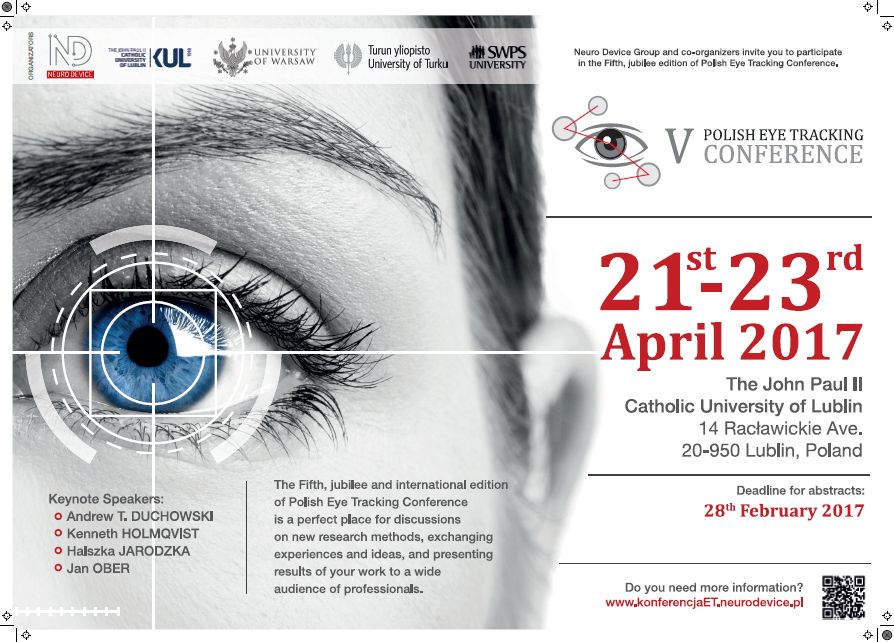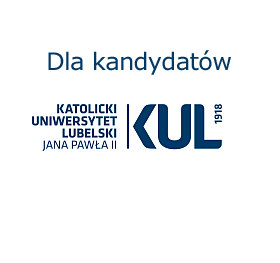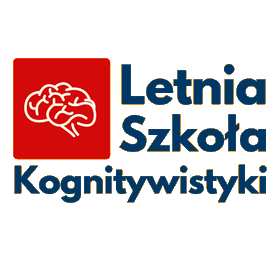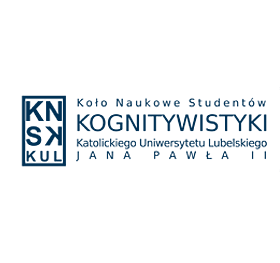V Polska Konferencja Eyetrackingowa
V Polska Konferencja Eyetrackingowa
Jest nam ogromnie miło zaprosić Państwa na Jubileuszową V Polską Konferencję Eyetrackingową, która odbędzie się w Lublinie na Katolickim Uniwersytecie Lubelskim Jana Pawła II w dniach 21-23 kwietnia 2017 r.

We have an honour to annouce that the keynote speakers of the 5th Polish Eye Tracking Conference are going to be one of the world’s famous researchers of eye tracking:
- Andrew T. Duchowski – a Professor of Computer Science at Clemson University, USA
- Kenneth Holmqvist – a Professor in Psychology, Sweden
- Halszka Jarodzka – an assistant Professor at the Welten Institute – Research Centre of Learning, Teaching and Technology of the Open University of the Netherlands, Heerlen, Netherlands
- Jan Ober – a Professor at The Institute of Biocybernetics and Biomedical Engineering Polish Academy of Sciences, Poznań, Poland
We kindly inform that the names you can find in the programme above are the names of the speakers presenting the researches. The details regarding the coauthors will be included in the printed programme of the Conference.
At the Conference there will be a possibility for speakers, coauthors taking part in the Conference, posters’ presenters and other participants to receive a Cerificate confirming the participation in the Conference.
Programme
[accordion]
[acc_item title=”Friday, 21st April, 2017″]
- From 13:00 Registration
- 16:00 Opening of the Conference
- 16:10-17:00 Keynote speaker prof. Kenneth Holmqvist: What eye-trackers are; types of instruments and their properties.
I will talk about the different methods that have been used to track human eye-movements. I will focus of the features of the eye(s) that they track, and their properties in terms of precision, accuracy, sampling frequency, latencies, temporal precision, and coordinate systems. I will also peek forward into the future and guess what eye-trackers we might see in 10 years time. - 17:00-17:25 Agnieszka Nowik, The stages of planning functional grasps of tools in right- and left-handers – an eyetracking study.
- 17:25-17:50 Jukka Hyönä, Eye movements when tracking multiple moving objects.
- 17:50-18:15 Piotr Dlugiewicz, Validity of the Index of Cognitive Activity, as a measure of cognitive effort – pilot study.
- 18:15-18:40 Joe MacInnes, Comparison of temporal models for spatial cuing.
- 18:40-19:05 Forward session
- 19:05 Welcome meeting „Eye on finger food” ATRIUM at The John Paul II Catholic University of Lublin
[/acc_item]
[acc_item title=”Saturday, 22nd April, 2017″]
- From 8:00 Registration
- 8:30-9:00 Welcome coffee
- 9:00-9:10 Opening of the second day of the Conference
- 9:10-10:00 Keynote speaker prof. Jan Ober: Eye movements for problem solving.
- 10:00-10:25 Agnieszka Fudali-Czyż, Oculomotor parameters in analysis of eye-fixation related potentials (EFRP).
- 10:25-10:50 Michał Chwesiuk, Radosław Mantiuk Do-It-Yourself High Frequency Eye Tracker.
- 10:50-11:15 Jacek Matulewski, The developement of Gaze Interaction Markup Language (GIML).
- 11:15-11:55 Forward session
- 11:55-13:10 Lunch break
- 13:10-14:00 Keynote speaker prof. Andrew Duchowski: Eye Tracking Measurement of Cognitive Load
In this talk I will compare and contrast a number of approaches to the measurement of cognitive load with an eye tracker. The first three are based on the manipulation of recorded pupil diameter. The fourth is based on the measurement of microsaccades. I will highlight two rather important pitfalls regarding pupil diameter measurement: sensitivity to luminance and off-axis distortion, and I will argue that microsaccadic measures are for the most part free from these limitations, however, their recording requires fast (> 300 Hz) sampling rates. Results from a high speed eye tracking study of task difficulty will be given to support the argument. - 14:00-14:25 Pawel Kasprowski, Gaze Self-Similarity Plots as a useful tool for eye movement analysis.
- 14:25-14:50 Dominik Chrząstowski-Wachtel, Marek Młodożeniec, Improving Gaze-Control in Games.
- 14:50-15:15 Stanislav Popelka, ScanGraph. A tool for scanpath comparison using cliques of simple graphs.
- 15:15-16:00 Forward session
- 16:00-16:35 POSTER SESSION 1 / Coffee break
- 16:35-17:00 Raymond Bertram, How expertise in radiology changes perceptual processes.
- 17:00-17:25 Adrianna Liczbańska, Recognising faces in the crowd.
- 17:25-17:50 Krzysztof Krejtz, Attention to human and animal faces – an eye tracking study among carnists, vegetarians and vegans.
- 17:50-18:30 Forward session
- 20:30 Integration meeting at Mercure Lublin Centrum Hotel
[/acc_item]
[acc_item title=”Sunday, 23rd April, 2017″]
- 9:00-9:10 Opening of the third day of he conference
- 9:10-10:00 Keynote speaker Halszka Jarodzka PhD: Keeping an eye on the classroom: How eye tracking helps us to understand and to support teachers and pupil.
Eye tracking research in educational science has provided interesting insights into how learning works and how its instruction should be designed. Most of this research – just as most eye tracking research in general – had taken place in the laboratory. Educational practice, however, is very different from any laboratory setting. For instance, a classroom is composed of many students in contrast to lab studies with one participant only. Hence, the question is to which extent can we generalize findings from lab studies to the educational practice and where do we need to move on towards more field studies to capture its complexity? In my keynote, I would like to address this questions from two perspectives, namely from the viewpoint of the teacher and from the student. In the teacher perspective, I will focus on how teachers develop visual expertise in managing a classroom full of students and how this can be investigated by eye tracking (and other triangulating measures). In the students perspective, I will discuss what influence the presence of others has on the students’ attentional processes and ultimately on their learning and how this could be investigated, but also supported with eye tracking. - 10:00-10:25 Katarzyna Harezlak, Chaotic behaviour of Eye Movement Signal.
- 10:25-10:50 Anastasiya Lopukhina, Eye movement control in the visual world paradigm.
- 10:50-11:15 Marta Rusnak, Eye tracker as a research tool for studying architectural heritage.
- 11:15-11:35 POSTER SESSION 2 / Coffee break
- 11:35-12:00 Anna Bonek, Perception of German administrative acts during translation proces.
- 12:00-12:25 Tuomo Häikiö, Syllables vs. morphemes in early reading of Finnish.
- 12:25-12:50 Paweł Korpal, Katarzyna Stachowiak On visual processing of numbers and its effect on the accuracy of simultaneous interpreting.
- 12:50-13:15 Małgorzata Szupica-Pyrzanowska, Katarzyna Malesa The influence of intense linguistic training in L2 and L3 on the sensitivity to errors in L1 – an eyetracking study.
- 13:15 Closing the Conference
- Lunch
[/acc_item]
[/accordion]
Workshops
Key information about the workshops:
[accordion]
[acc_item title=”Workshop 1″]
CJP room: C-515
Building name: Collegium Jana Pawła II ( The John Paul II Collegium)
Entrance: from the side of Hieronim Łopaciński street
Title: Programming eye-tracking experimental procedures using PsychoPy
Description: The workshop is planned for researchers who want to learn to conduct eye-tracking experiments using PsychoPy and have little or no experience with PsychoPy and Python programming language. On the workshop we will focus on generating experiments (presenting stimuli, collecting responses), controlling experiment flow (randomization) and collecting eye-tracking data.
Lecturer: Cezary Biele
Psychologist and psychophysiologist interested in the role of emotions during human computer interactions and development of new methods for gaze-controlled gaming. He has an extensive experience both in the area of basic and applied research, where he uses Python and PsychoPy for experiment development and data processing and analyses.
[/acc_item]
[acc_item title=”Workshop 2″]
CTW room no: 217
The Catholic University of Lublin
Building’s name: Knowledge Transfer Center (Centrum Transferu Wiedzy)
Entrance: from the side of Idzi Radziszewski street
Title: Combining physiological data and eye tracking
Description: During the workshop attendees will learn how to use eye tracking data together with physiological data, such as EDA, heart rate or EMG. Attendees will have opportunity to perform an experiment with either mobile and stationary systems. It will be also demonstrated how to perform data analysis.
Lecturers: Krzysztof Malej and Aleksandar Dimov
[/acc_item]
[acc_item title=”Workshop 3″]
CTW room no: 202
The Catholic University of Lublin
Building’s name: Knowledge Transfer Center (Centrum Transferu Wiedzy)
Entrance: from the side of Idzi Radziszewski street
Title: How to use eye tracking with spherical photos and videos?
Description: Main goal of the workshop is to see and test the newest possibilities of using the spherical photos and videos. Participants will be also instructed how to start with building basic virtual experiment and gaze-based interaction in VR.
Lecturers: Ewa Ramus and Ashley Keeler[/acc_item]
[/accordion]





